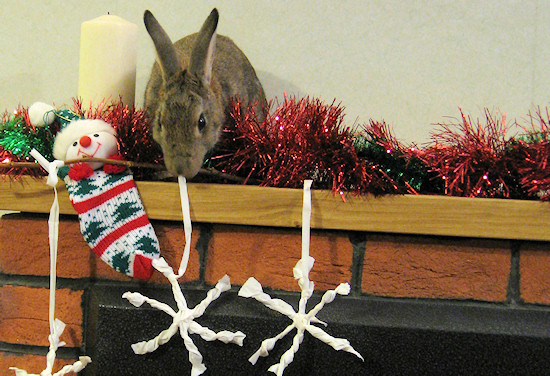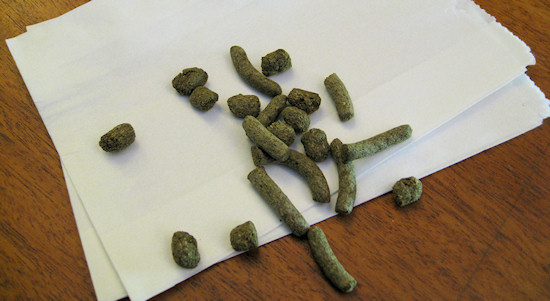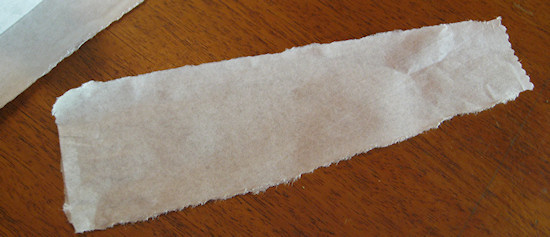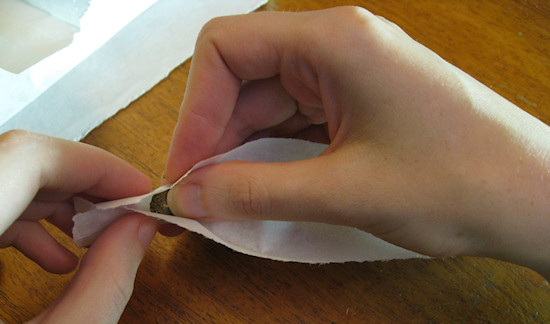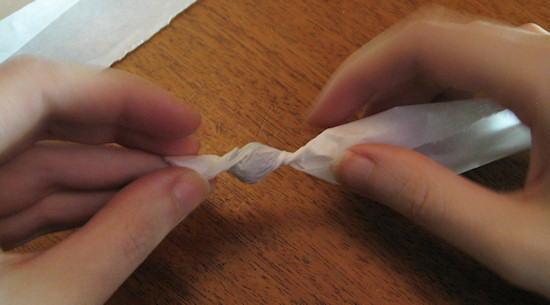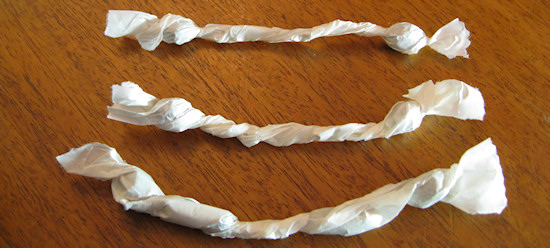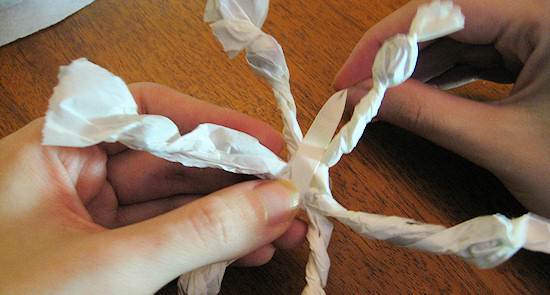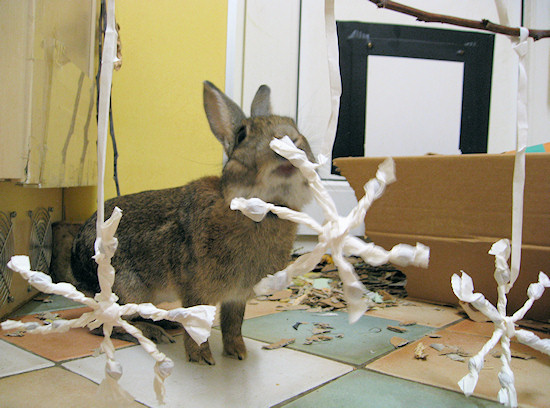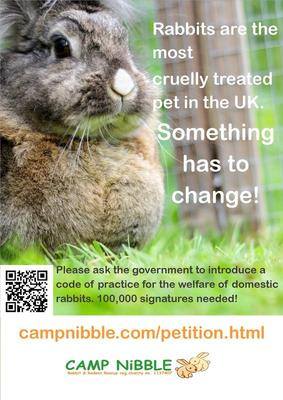 We believe that a government code of practice outlining what is required to meet the welfare needs of rabbits will lay the foundations towards shortening the huge gap between the reality of their needs and what many owners are currently providing. – Camp Nibble
We believe that a government code of practice outlining what is required to meet the welfare needs of rabbits will lay the foundations towards shortening the huge gap between the reality of their needs and what many owners are currently providing. – Camp Nibble
In 2006 the UK introduced a new Animal Welfare Act. The key change was instead of just being wrong to treat an animal cruelly, owners now had a duty of care to provide for all animals needs, including the need:
- For a suitable environment (place to live)
- For a suitable diet
- To exhibit normal behaviour patterns
- To be housed with, or apart from, other animals (if applicable)
- To be protected from pain, injury, suffering and disease
Codes of Practice
To cover all animals, the needs are expressed in a very general way – just what is a suitable diet? Obviously, the answer for a cat is very different for a rabbit. So, how would people know what the legal ‘suitable diet’ was for their pet? The solution was included in the Animal Welfare Act – the government would issue ‘Codes of Practice’ documents. These would explain in detail how to put the law into practice.
14.1 The appropriate national authority may issue, and may from time to time revise, codes of practice for the purpose of providing practical guidance in respect of any provision made by or under this Act.
Although the Animal Welfare Act (2006) applies to both England and Wales (the Animal Health and Welfare (Scotland) Act 2006 applies in Scotland) the Codes of Practice don’t.
Wales went ahead and published a Code of Practice for Rabbits in 2009, which does a very good job of explaining how to care for a rabbit’s diet, housing, social, behavioural and health needs e.g.
Your rabbit should have daily access to a safe and secure run where it can run and jump. The run should be as large as possible so that your rabbit can stretch upwards to its full height and run, not just hop.
But, whilst England went ahead and issued Codes of Practice for cats, dogs, horses and primates… seven years after the Animal Welfare Act the promised Code of Practice for Rabbits hasn’t materialised for England or Scotland. This is despite the fact that rabbits are Britain’s third most popular pet and according to the RSPCA its most neglected.
Concerns over this issue were noted in the 2010 ‘Memorandum to the Post-Legislative Assessment of the Animal Welfare Act 2006 (PDF)‘ which consulted a number of groups, such as the RSPCA and British Veterinary Association, working with the act to see what they thought of it.
“concerns include the general lack of codes for different species and the lack of training for local authority inspectors, such that some are not aware of how the code ought to be implemented. A number of groups expressed concern over Defra’s priorities in introducing secondary legislation and in the choice of animals covered by Codes of Practice for e.g. private ownership of primates, but no Code of Practice for rabbits (in England).”
In February 2011, William Bain MP, asked the Secretary of State for Environment, Food and Rural Affairs when they planed to publish a code of practice on the welfare of pet rabbits.
The answer:
“We have no current plans to publish a code of practice on the welfare of pet rabbits. We consider that the requirements of the Animal Welfare Act 2006 to provide for the welfare needs of animals are sufficient to ensure the necessary protection for the welfare of pet rabbits.”
Which is daft! If we want the public to improve their care standards there needs to be a clear document explaining what those standards are – that’s where the Rabbit Code of Practice should come in. I’m not the only one to think it.
Campaigning for a Rabbit Code of Practice
Camp Nibble, a rabbit rescue centre in Leeds, have started a petition calling for the government to introduce a code of practice. If you haven’t come across them before, petitions run through the Direct.gov website that generate 100,000 signatures within a year trigger a debate in parliament. It sounds like a lot but it’s quite a small portion of the millions of rabbit owners in the UK. I asked Hannah, from Camp Nibble, why a Code of Practice is important to their work:
Most of our rescue rabbits one way or another have ended up at Camp Nibble due to people taking on rabbits with little realisation of what is needed for them to live happy, healthy lives. They are widely misunderstood animals and are very often mistakenly taken on as cheap, easy pets. In many cases the responsibility for their care is even left in the hands of children.
Welfare organisations now understand well what rabbits need for their welfare to be best met. However, this information needs to be adopted and accepted by the general public. We believe that a government code of practice outlining what is required to meet the welfare needs of rabbits will lay the foundations towards shortening the huge gap between the reality of their needs and what many owners are currently providing.
With the code of practice in place we would hope to see a reduction in the currently huge numbers of rabbits being neglected/abandoned simply due to ignorance and a misunderstanding of their needs.
On behalf of Camp Nibble and the millions of rabbits in the UK, can I ask you a little favour now? If you are in the UK, can you please pop over here and sign the petition:
http://epetitions.direct.gov.uk/petitions/49086
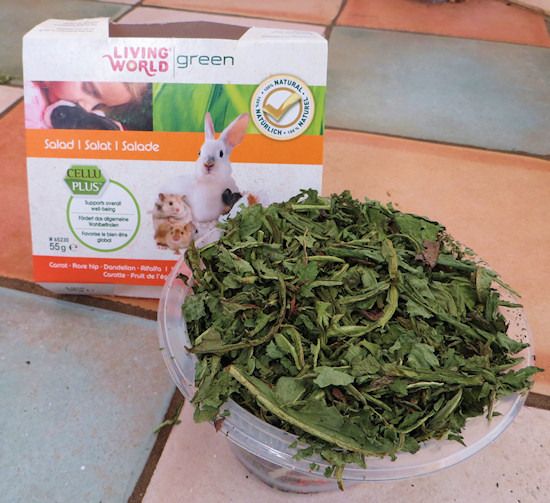
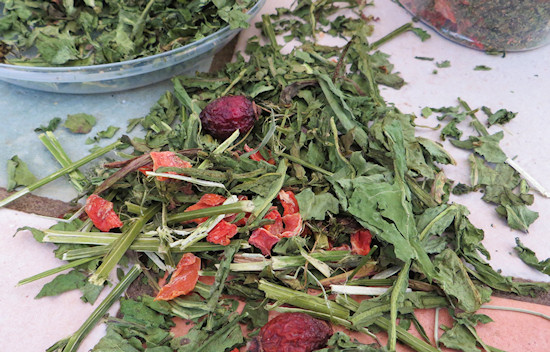
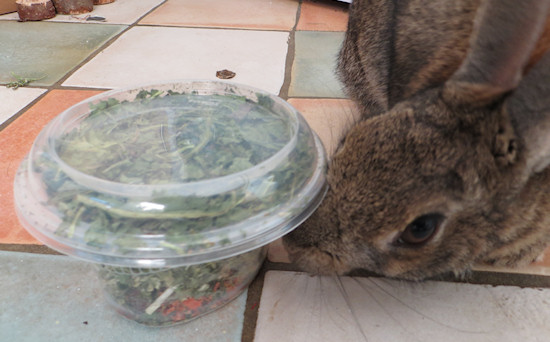
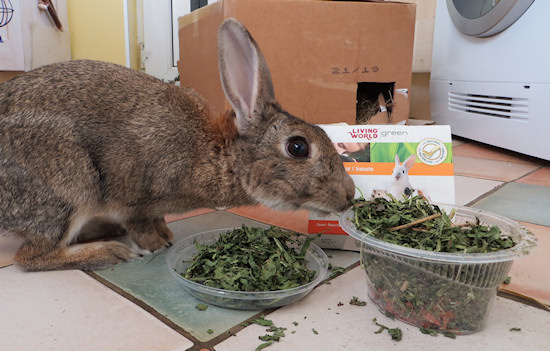
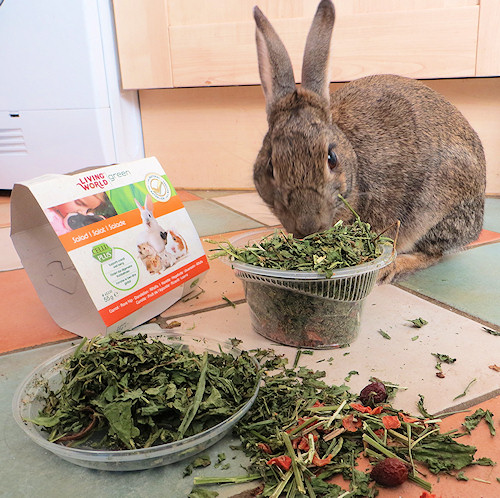



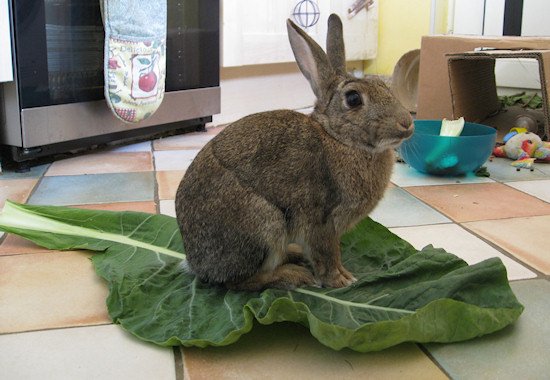
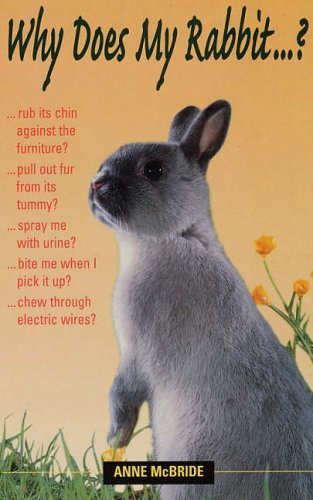 Just before Christmas (Happy New Year!) Souvenir Press offered to send me a copy of ‘Why does my rabbit…?‘ by Anne McBride to review. In case you haven’t guessed, I said yes and here is my review.
Just before Christmas (Happy New Year!) Souvenir Press offered to send me a copy of ‘Why does my rabbit…?‘ by Anne McBride to review. In case you haven’t guessed, I said yes and here is my review.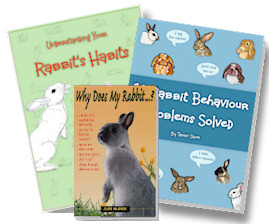 Two Book Giveaway!
Two Book Giveaway!